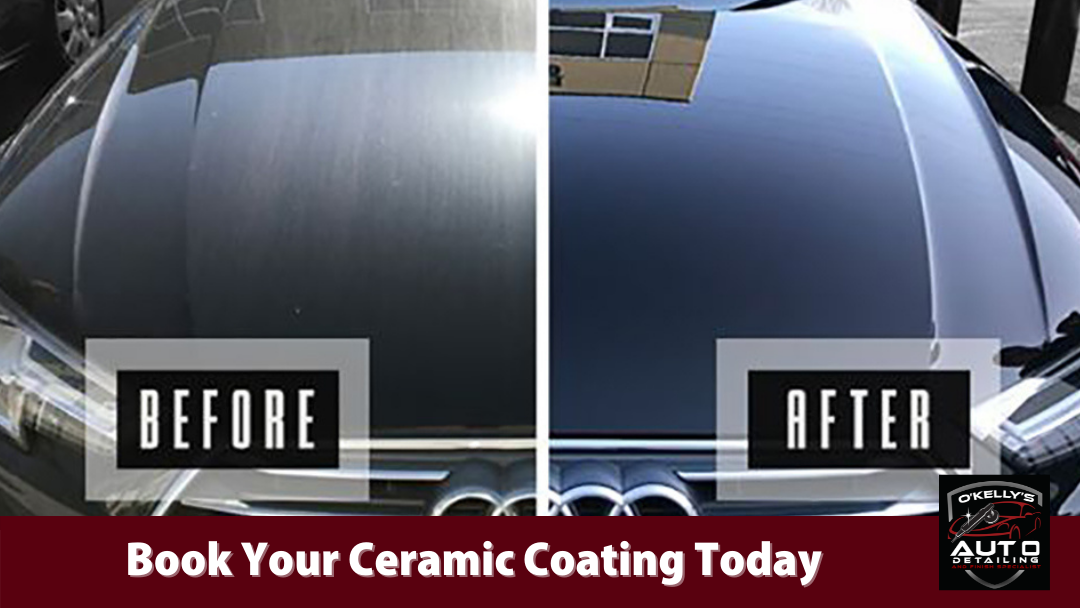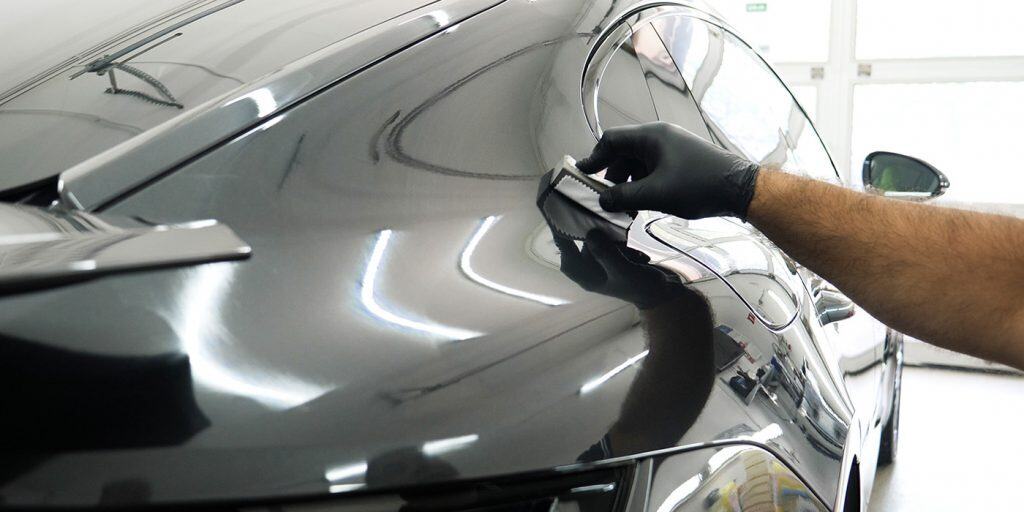How Ceramic Coating Enhances Your Vehicle's Protection and Appearance
How Ceramic Coating Enhances Your Vehicle's Protection and Appearance
Blog Article
Ceramic Finishing vs. Traditional Wax: Which Supplies Much Better Long-Term Defense?
The debate between ceramic layers and standard wax for lorry defense has actually garnered considerable attention amongst vehicle fanatics and specialists alike. Ceramic finishes flaunt exceptional durability and resistance to ecological elements, yet the intricacy of their application raises questions concerning availability and practicality.
Summary of Ceramic Finishing
Ceramic layer has acquired substantial appeal among vehicle lovers and detailers alike due to its innovative safety qualities. This cutting-edge modern technology is developed to produce a resilient, hydrophobic guard over an automobile's paint surface, substantially enhancing its resistance to ecological contaminants such as dirt, UV rays, and chemical stains. Unlike typical wax, which offers a short-term layer of protection, ceramic finishings bond at a molecular level with the paint, using lasting longevity-- frequently prolonging beyond 2 years with correct upkeep.
The application procedure involves thorough preparation of the vehicle's surface, including cleansing and polishing to guarantee optimum attachment. Once used, the coating remedies to develop a durable layer that not just includes depth and gloss to the paint yet also streamlines maintenance. With its hydrophobic properties, ceramic layer allows water and dirt to move off even more quickly, reducing the frequency of washes and minimizing the risk of swirl marks.
Additionally, ceramic coatings are offered in numerous formulations, permitting individuals to select items customized to their details demands and choices. On the whole, ceramic coating stands for a considerable innovation in paint protection modern technology, providing remarkable efficiency contrasted to traditional alternatives.
Overview of Traditional Wax
Generally concerned as a staple in vehicle care, wax works as a preferred choice for those seeking an uncomplicated technique to improve and shield their automobile's paint - ceramic coating. Automotive wax usually makes up natural components, such as carnauba, or artificial substances, developed to produce a safety layer on the surface of the paint. This layer not only enhances the automobile's gloss and beam but additionally supplies a barrier versus environmental contaminants
The application of wax is typically straightforward, making it easily accessible for both specialists and do it yourself fanatics. It can be applied by hand or maker, enabling for versatility in the outlining process. When applied, wax calls for a treating period, after which it solidifies to create a protective covering. Wax is additionally known for its capability to ward off water, advertising a beading impact that aids in the prevention of water spots and rust.
Nonetheless, while wax works for enhancing the aesthetic appeal of a car, it is essential to keep in mind that the defense it offers may require extra constant reapplication compared to alternative products, such as ceramic coatings. On the whole, conventional wax stays a preferred option for those prioritizing convenience of usage and immediate visual enhancement.
Resilience and Durability Contrast
While both ceramic finishes and typical wax deal safety advantages for auto paint, their durability and longevity differ substantially. Standard wax, normally made from all-natural carnauba or artificial polymers, normally supplies a protective layer that lasts around three to 6 months. This fairly brief life-span requires regular reapplication to maintain ideal defense.
In comparison, ceramic finishings are crafted from innovative nanotechnology, forming a covalent bond with the paint surface. This leads to a durable, hydrophobic layer that can sustain for 2 to five years, relying on the item and environmental conditions. The premium durability of ceramic finishes is credited to their chemical structure, which provides enhanced resistance to scratches, UV rays, and oxidation.

Security Versus Environmental Variables
Securing a vehicle's paint from ecological aspects is important for preserving its appearance and worth gradually. you can check here Vehicles are regularly exposed to a selection of elements, consisting of UV rays, bird droppings, tree sap, acid rain, and road crud, all of which can endanger the integrity of the paintwork.
Ceramic finishes supply a durable defense versus these environmental assailants. Unlike conventional wax, which can degrade promptly under UV direct exposure, ceramic layers create a sturdy, hydrophobic layer that stands up to the dangerous effects of sunlight and ecological pollutants. This sophisticated innovation produces a chemical bond with the car's surface area, supplying exceptional defense that lasts for many years, click reference also in rough conditions.
In comparison, ceramic coatings preserve their safety qualities much longer, considerably decreasing the risk of paint damage and making sure that the lorry keeps its aesthetic charm. As a result, ceramic finishings are progressively acknowledged as the premium selection for lasting protection versus environmental elements.
Application and Maintenance Differences
The techniques of application and subsequent upkeep for ceramic coverings and typical wax vary considerably, impacting the general individual experience and performance of each item. Ceramic coverings require an even more elaborate application process, typically involving surface area preparation that includes washing, decontaminating, and brightening the automobile. Once the surface prepares, the ceramic finishing is used in a regulated environment, usually needing expert proficiency to guarantee correct curing and bonding to the paint.

While both products improve automobile appearance, the longer-lasting security offered by ceramic finishes might justify their preliminary financial investment, despite the even more requiring application process. Alternatively, standard wax continues to be a prominent choice for those looking for an easier, albeit short-term, option.

Final Thought
Finally, ceramic finishes demonstrate substantial benefits over standard wax in regards to resilience and environmental management. With a lifespan expanding two to five years and superior resistance to UV rays, dirt, and chemical stains, ceramic coatings provide a more effective solution for lasting vehicle maintenance. Although the application process may require expert knowledge, the resulting price savings and lowered frequency of reapplication highlight the worth of ceramic coverings for those looking for optimum vehicle protection.
The discussion between ceramic finishes and traditional wax for automobile defense has gathered considerable attention amongst automobile enthusiasts and experts alike. Unlike traditional wax, which gives a momentary layer of protection, ceramic finishes bond at a molecular level with the paint, using lasting durability-- often expanding past two years with proper upkeep.
While both ceramic coverings and conventional wax offer protective advantages for auto paint, their resilience and longevity vary dramatically. For cars and truck fanatics seeking lasting defense, ceramic layers present a compelling advantage over conventional wax products.
In final thought, ceramic coatings demonstrate considerable benefits over traditional wax in terms of toughness and ecological protection.
Report this page